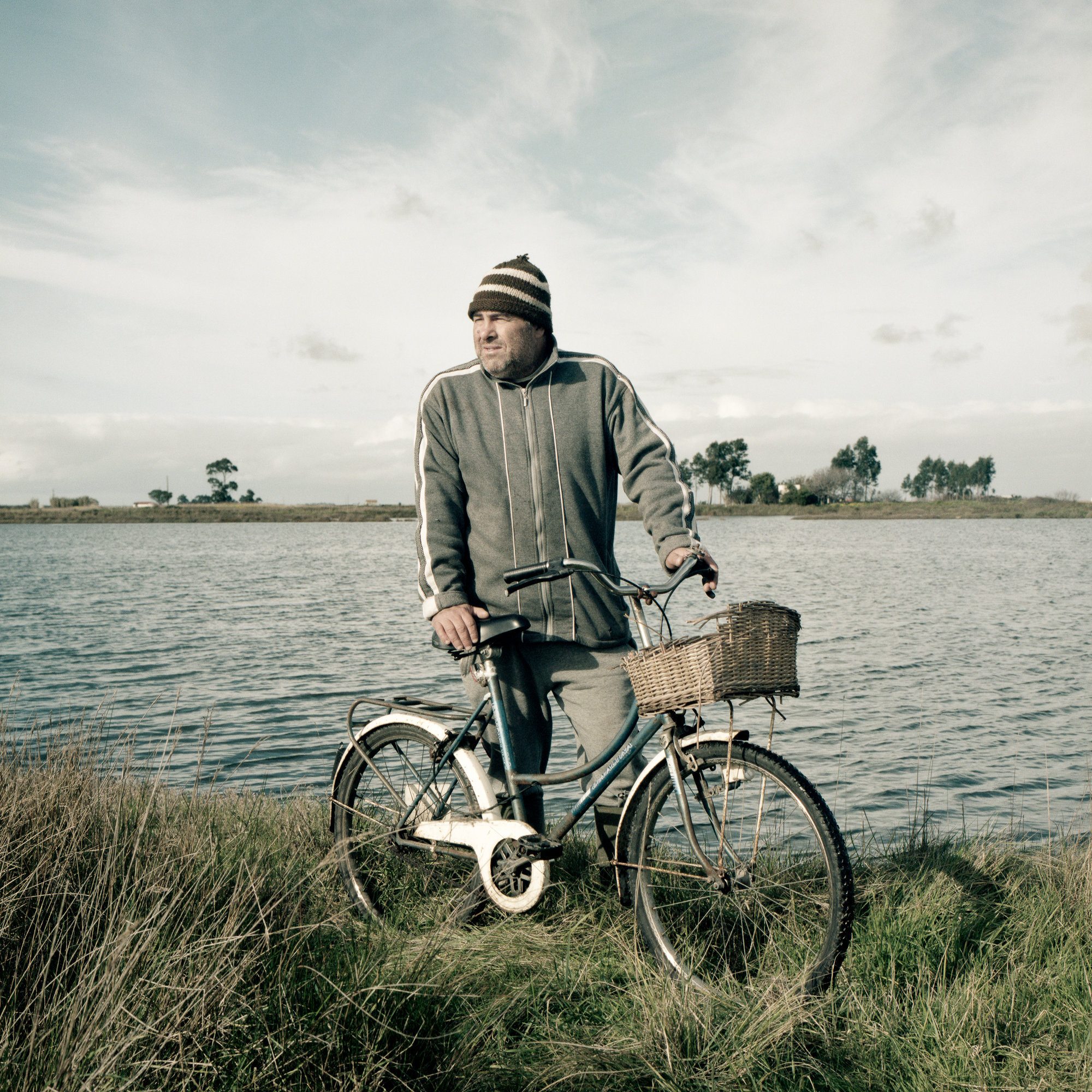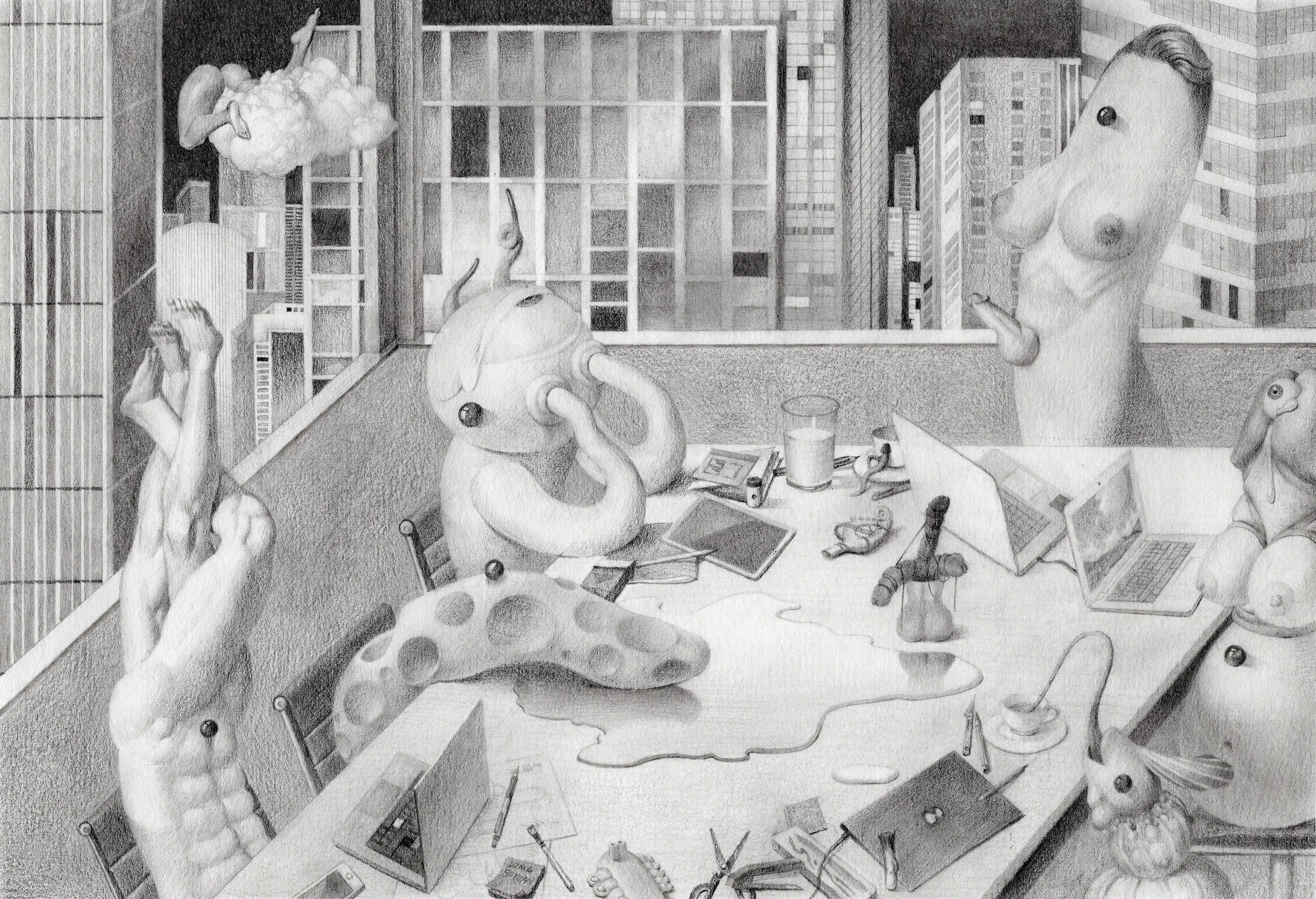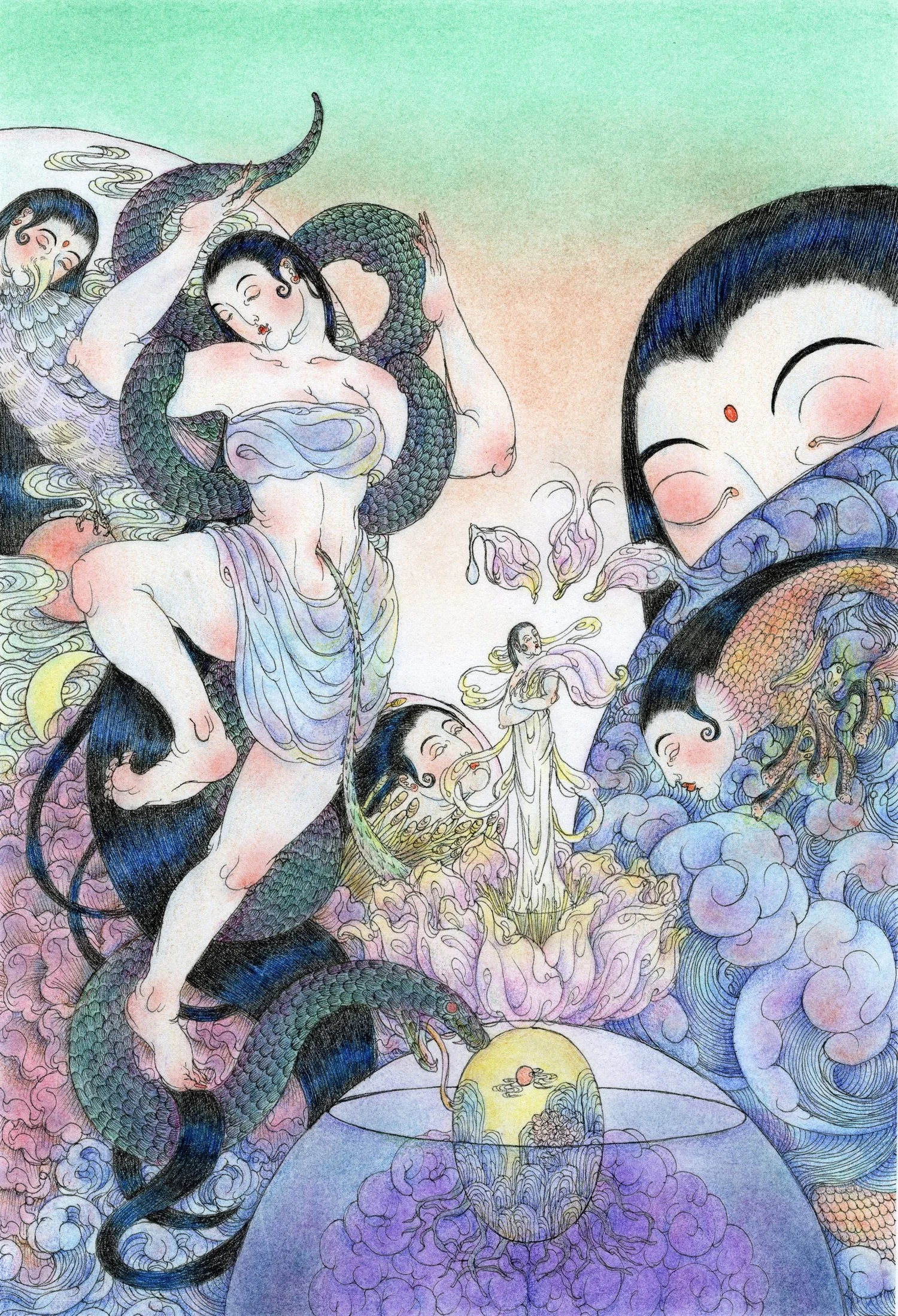10 Questions with Hermano Noronha
Doctoral student, Colégio das Artes, Coimbra University, MA Artistic Contemporary Creation, Aveiro University, 2014. In 2020 "Pai Mar" Photographic Project was selected for printing by Cahier d'images. In 2018, a jury of photography of the 10th LabJovem, Regional Direction of Culture of the Azores.
In 2017 coordinated the INVISIVEL Project for the 16th anniversary of the Expansion and Remodeling of the Maritime Museum of Ílhavo; developed the project "From the Fishing Community to the Tourist Community", within the framework of the celebrations of the centenary of elevation from Quarteira to Parish; and was the Artistic Artistic Coordinator of the ReSart Marvão Art Residence. In 2016 he developed the project "Half Orange" for the Maritime Museum of Ílhavo.
In 2015 he was a finalist at the International EI Awards 2015 - Encontros da Imagem; Selected for the CreArt 2015 European Exhibition "Me and the City" with exhibitions in Pardubice, Linz, and Genoa. In 2014 he was the recipient of the grant Estação Imagem Mora 2014, starting the "PRESENTE" project within the Master.
Hermano Noronha portrait.
ARTIST STATEMENT
“Hermano Noronha is more interested in the symptom than in the evidence, in reaching what is under the obvious. He is interested in the vortex of time and how the plurality of individual memories is combined in the building of collective memory.
Through the identification and photographic registration of symbolic markers, he seeks to build archives against oblivion.”
INTERVIEW
Could you tell us a little more about your background? How did you start experimenting with images?
When I was a little boy, I remember having family photo albums in the house, and those pictures fascinated me. Although I didn't completely understand them, those worked as an escape into my imagination. Maybe that's why in my twenties, whilst recovering from an accident, I bought a camera as a way of keeping my mind busy. Photographing, revealing, and printing photos became a daily activity. At a certain point, I started collaborating with the Portuguese International Amnesty, asking me for cover pictures for their newsletter. That's how I became interested in social and historical issues, looking for a sense of how to accomplish photographic projects.
I have always had the perception that as time goes by, pictures survive us while memories degrade. With time, I became more and more interested in how images relate and produce meaning, and stimulate narratives. Photography became a way of not forgetting or rescuing me from forgetfulness.
What is your personal aim as an artist?
I wish my photos outlive me. I want them to have meaning and impact, not to be consumed by time. I wish I had more time and economic independence, determining factors for the total dedication and creative freedom. In some works, I make sound mixtures from interviews or noises, sound images that I recognize as contributing to the final visual result.
I am also increasingly interested in developing collaborative works with scientific projects, giving them an artistic approach. I would like to have more artistic residency experiences, as I really like sharing my work with other artists and the public.
I am curious, and I like to learn. I really believe knowledge is an important tool for creativity. That's why I'm a Ph.D. candidate in Contemporary Art, where I am researching the relationship between documentary photography and collective memory. The objective is to understand the contribution of the inclusion of fictional nature images, that is, of a less documental nature, in collective memory building.
From the series AVEIRENSE, #75, Photography, 60X60 cm, 2014. Hermano Noronha©
In your opinion, what role does the artist have in society?
An artist's social role is accomplished through his work. The artist fulfills a purpose, one of freedom, the manifestation of concern. The artist is a researcher, a producer of worlds, where his work is his gift. The role of the artist is fulfilled through the viewer, in the way its expression is received or in the way others reach it. An artist is a communicator, even if just to himself. It is someone who confronts his amazement and translates it into his work. Yes, the artist's social role is to produce work that fills the empty spaces of dizzy world. Although the artist has no responsibility to change society, it is his duty to raise questions, propose subjects or simply fulfill voids.
Your work has a strong focus on collective memory. How do you think we can build a collective memory in a world so fragmented as the one we live in?
In a globalized world, different identities tend to be diluted, and boundaries become blurred. In this way, we move towards a poorer, more universal collective memory. On the other hand, some identities seek to stand out and gain power, which is a natural reaction to the fear of forgetfulness. Collective memory annulment has been a constant throughout history, making the archives a place of resistance. This is where collective memory is discussed and legitimized, in this manner, surviving through time. As an artist, I know that through the construction of archives against forgetfulness, I can contribute to the safeguarding of collective memories that are becoming extinct. In this sense, museums and art galleries are proper places to display my work.
Hermano Noronha©
Hermano Noronha©
As a photographer, what is the most challenging part of your work?
In my case, the hardest part is accessed. Having access to people, places and objects can determine if it is the right time to move forward with a photographic project because, sometimes, it is too early to approach certain sensitive topics.
The accomplishment of my work involves establishing trustful contacts with the people I need to participate in my projects. Their testimony can be decisive and necessary to determine the relevance of evidence and landscapes that I must include in my work. For example, when I photographed Portuguese Colonial War veterans, it was essential to read about what military life is and understand what this war meant to them. Likewise, when I photographed fascist opponents, I had to learn about the fight against Estado Novo's repression. Each theme requires previous work to be knowledgeable of certain terminology, a certain way of speaking, to establish confidence with whom I will speak, to obtain their testimonies and permission to take their portrait. Without establishing trust, the testimony is limited, and people's committal is evasive or even refused. Confidence is also necessary to access material testimonies, objects, or places contributing to the work's accomplishment. For one of my projects, I needed a Colonial War uniform. Although no ex-combatant lent me the ones they kept religiously, it was through my contacts that I could obtain a uniform whose camouflage pattern is still the same as that used in the Colonial War.
Where do you find inspiration?
Inspiration is not a neutral entity. It comes from the combination of knowledge, dedication, and reflection. Regarding knowledge, I try to keep myself up to date with the most recent artistic production. I review some of the classics, obviously, as they are basic pieces that can be re-interpreted. I also try to know lesser-recognized artists whose work ventures conceptually. I read a lot, something that is not strange as I am developing a Ph.D. thesis in Contemporary Art and, even if I wasn't, reading is always important. About dedication, I speak of being immersed in work, living it intensely. I always start by raising questions that I consider important to answer visually. Then I look for answers, either through contact with people, interviewing them, or from places or objects that are significant to the subject that I'm working on. Through the photographic process, I plan to follow a "controlled drift": were casual and intuition work together, leading the work but never losing focus of the initial plan. The reflection process occurs in the last phase of the work when images accumulate, becoming necessary to order them, finding flaws or new answers. In this final phase of assembling, whether for an exhibition or a book, it is important to use the knowledge and be awake or receptive, experimenting with different relating images. I think that inspiration is the result of a process where experience is consolidated, giving me more confidence in my work's success and more confidence to test new approaches or try new solutions.
Going back to the example I gave earlier, the need for a military uniform worn during the Colonial War was necessary for the PRESENT photographic project in 2014. The inspiration for this work resulted from the convergence of different perceptions: when a dead soldier's name is called, all his comrades answer "present" in unison; if the Colonial War were to happen today, it would be present-day youth who would go to Africa to fight; in the national monument to the soldiers killed during the Portuguese Colonial War their names are there, but not their faces.
This inspired me to conceive the PRESENTE photographic project. I photographed young people with the same birthday as those who, then young people, died in the Portuguese Colonial War, a list that I gave them at the end of the interview/portrait session. This way, the young symbolically gave their face to the unknown face of the soldiers killed during the war, creating a diptych.
From the series Meia Laranja, #16, Photography, 50x70 cm, 2014. Hermano Noronha©
From the series PRESENTE, #13, Photography, 60x90cm, 2015. Hermano Noronha©
What do you hope that the public takes away from your work?
Due to my work's nature, there is a part that addresses the collective memory of those who shared their memories with me. It is important that they see themselves in it and feel honored with my work. It is important that they feel that they are paid homage in my work. Their memory is saved for future generations. For the rest of the public, my goal is that my confrontation with my work will reflect on our existence's fragility and how, in this brief experience that is life, our critical spirit and decisions are important for a better coexistence in society. I believe that it is important to know history to prevent repeating its negative parts.
How has your art evolved over the years?
I believe that my work has become more mature, that my sensibility in approaching people and subjects has become more objective, consolidating an authorial visual language. To achieve this, I was fortunate enough to discuss my work's development with other artists and teachers who accompanied me at different training stages. I did a postgraduate course in Photography, Design, and Contemporary Art in 2011-2012, where I started working on the Portuguese Colonial War theme. Then a Master's degree in Contemporary Artistic Creation, 2013-2014, where I won the "Estação Imagem" scholarship with the PRESENTE project proposal, which resulted in a book and several exhibitions at the National Level. I also represented the city of Aveiro in the CreArt project where, for the first time, I participated in international exhibitions. And now, for my Ph.D. in Contemporary Art, I am developing the Pai Mar Project.
From the series INVISIVEL, #1392, Photography, 50x70cm, 2017. Hermano Noronha©
What are you working on now, and what are your plans for the future?
I am currently preparing the "Ler e Divulgar" exhibit, which should have opened in 2020 but had to be canceled due to the pandemic. The photographs were all printed, the gallery was going to start building the panels, and all promotional material was also being finalized. But in March, with the beginning of the pandemic, everything stopped. This year we are considering moving forward with publishing a book and a virtual exhibition. Although not yet fully defined, I consider that the work should be made public as soon as possible because the portrayed people are older. As time passes, there is a greater risk that they will not see the result of their participation. Due to the pandemic, the Pai Mar Project (where I participate as a photographer for APCM, a partner entity of the CONCHA Project) is also interrupted until 2022. At this point, I hope we will be able to resume.
As I need to contact many people in my projects, which is not currently recommended, I am taking the opportunity to dedicate myself to research and writing my doctoral thesis.
We're in 2021; tell us your feelings.
The pandemic continues to force social restrictions and isolation that keep people from close contact with others, which seems to be around for a while longer. Economically, certain activities are struggling while others are thriving. As in all moments of crisis, it is necessary to readjust and look with hope for the positive things. I speak of a polluted planet, of accelerated and unbalanced life rhythms, of an economy based on waste, the unsustainable exploitation of natural resources, and life dimensions that need to be rethought. I hope that this pandemic is not just a setback for technological development problems with social and environmental costs. Perhaps it is time to develop a more humane technology, less concerned with profit and more with sustainability and equity.



























